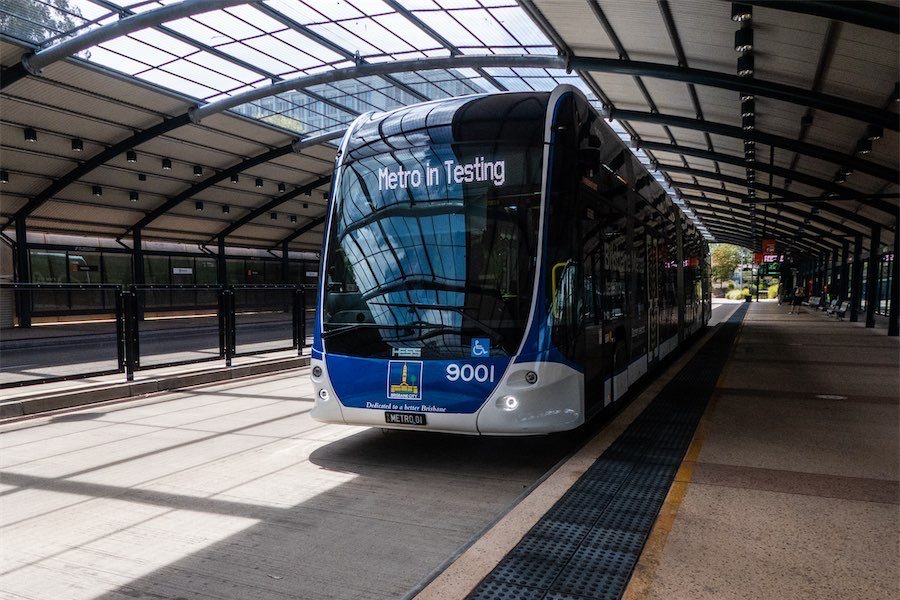“We need a circuit breaker before everyone climbs back into their bunkers,” says letter writer PETER TAIT, bemoaning that “planning for the city we want to live in continues to be a hot issue”.
ELECTION’S passed, and we have a new Labor-Greens Coalition government. Still in the “CityNews” opinion columns, planning for the city we want to live in continues to be a hot issue.
 In the October 12 issue, Paul Costigan suggests it’s time for a “completely new planning system” and an end to sham consultation. Michael Moore wonders if the Greens will be hamstrung by the Parliamentary Agreement. Sue Dyer wonders about the magic of an “improved community consultation” process.
In the October 12 issue, Paul Costigan suggests it’s time for a “completely new planning system” and an end to sham consultation. Michael Moore wonders if the Greens will be hamstrung by the Parliamentary Agreement. Sue Dyer wonders about the magic of an “improved community consultation” process.
We need a circuit breaker before everyone climbs back into their bunkers.
Another commitment in the Parliamentary Agreement is the Greens’ commitment to Neighbourhood Democracy. They seem to envision a small-scale participatory budgeting exercise. This is to be strongly applauded because there is nothing like having fingers on the purse strings for community members to have some real power.
In 2017-18 the ACT government experimented with a novel form of public consultation in the four-panel, citizen-jury processes it ran. The Canberra Alliance for Participatory Democracy welcomed these, and we have reflections on how these went according to a set of principles we developed with ACTCOSS (here)
Perhaps a citizens’ jury process might be the circuit breaker we need on planning. No one seems happy with how Canberra is developing (except maybe the Planning Directorate). Early in the 10th Assembly’s term might be the time to try to get this settled. What do others think?
Peter Tait, convener, Canberra Alliance for Participatory Democracy
Bastardising the memorial
I GUESS the beginning of the end of the memorial aspect of the AWM is inevitable in the quest to attract more visitors to what is becoming a war materiel Disneyland by the lake.
Our family has four inclusions on the Wall of Remembrance and it saddens me that the solemnity of our memorial to those who made the supreme sacrifice has been bastardised to the extent that it is now little more that a must-visit (we can do it in an hour or so) tourist attraction.
I had a high level of respect for the work of the former director Brendon Nelson, but even that has diminished somewhat in the light of the legacy of continual expansion with aspects irrelevant to the Memorial proper.
If we must have an exhibition space, expand the Treloar facility and leave the Memorial to perform its primary function – recognition of sacrifice – not a materiel history of the Australian military.
Brian Franklin, Fraser
Terroir works in mysterious ways
I REFER to Richard Calver’s article on the language of wine critics (CN, November 26). Mr Calver comments on the “pretentious clap-trap that is written about wine today”.
Having been a professional wine critic in a former life, I can attest to the rather exotic language commonly used to describe wine. It can be fiendishly difficult to describe the smell and taste of wine, but that is no excuse for using words, such as “it tastes like the sound of cicadas”, that could be described with a four-letter word rhyming with “clap-trap”.
However, I can confirm that it is possible to detect in wine the subtle differences caused by terroir, which can be described as the total environment (including geology, soil, climate and topography) in which grape vines grow.
While these differences are relatively easy to find in French wines, for example, they are largely masked by the smell and taste of the grapes in Australian wine.
Being a geologist, my chief interest is the influence of sub-soil geology and soil composition on the qualities that we measure, smell and taste in wine. A few years ago, I carried out research on the subject of terroir and its influence on wine. I found that there is indeed a relationship, in particular between grape properties (such as sugar content, or baumé) and the calcium content of the soil.
But terroir still works in mysterious ways.
Douglas Mackenzie, Deakin
PS: Stainless steel is a steel-chromium alloy, not chromium-plated steel, and does not form a layer of chromium oxide when exposed to air and water. Chromium (III) oxide is green, and commonly forms a powder.
When will they ever learn?
GIVEN ACT WorkSafe’s discovery of an “alarming” number of safety breaches in recent weeks at suburban construction sites in Throsby, Taylor and Ginninderry (“Safety breaches keep coming despite tough talk”, “Seven Days”, CN November 25), we can only wonder how such on-site industry slackness also leads to innumerable building defects and other costly oversights that may or may not get picked up under the current building inspection regimes.
Naming the aberrant companies involved would be in the public interest, as would trebling the fines issued and not using fines as a “last resort” measure.
Ratepayers have already invested considerably in the work of this valuable and necessary public service and all the warning bells it has been ringing loudly for some time.
Much higher fines could support the increased amount of effort required of WorkSafe while developers and builders seem little bothered by workplace rules, regulations, onsite training requirements and the use of basic common sense, let alone the poor impression they are creating in the public domain.
Keep up the good work, commissioner Agius, and we hope you are resourced sufficiently to adopt the key and now proven COVID-19 response principle of “Go hard and go early”!
Sue Dyer, Downer
Keep tram off the avenue
IT is reported that ACT Light Rail 2 (Civic-Woden) will now commence with the installation of the Woden “terminus”. That will give governments the opportunity to recast the current expensive, impractical, destructive and, frankly, naff Civic-to-State Circle section.
To that end, governments need to scrap the foolish “orthodoxy” of using Commonwealth Avenue and relocate the subject section to take in say, Edinburgh Avenue and the ANU campus (various options there), Acton Peninsula’s southern shore, an elegant new design-competition-sourced lake crossing structure for trams, bikes, and pedestrians (echoing Griffin’s missing one), and Flynn Drive connecting to State Circle.
That self-evidently legible route could offer some appropriate “land value capture” development sites and would cater for wider patronage, match currently planned inter-town travel times at peak hours and precipitate a sunny public lakeside precinct (much better than south-facing, apartments-dominated West Basin) at an expanded Lennox Gardens North/Flynn Place.
Most importantly, it would save the vital heritage and integrity of the City Hill precinct, Parkes Way, Commonwealth Avenue Bridge, Commonwealth Avenue’s cultural landscape, and the National Triangle’s symmetry.
The revised route would prevent Commonwealth Avenue’s desecration from inappropriate and view-blocking property development; while avoiding extensive, complicated civil-engineering works, ridiculous underground power lines, dangerously located stations and massive temporary and permanent traffic disruption/congestion.
Jack Kershaw, Kambah
Who can be trusted?
In a world of spin and confusion, there’s never been a more important time to support independent journalism in Canberra.
If you trust our work online and want to enforce the power of independent voices, I invite you to make a small contribution.
Every dollar of support is invested back into our journalism to help keep citynews.com.au strong and free.
Thank you,
Ian Meikle, editor





Leave a Reply